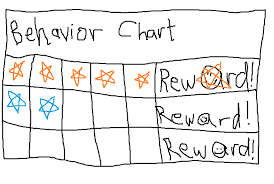Best Practice Advice
SEARCH BY SUBJECT AREA
Get financial adviser coach blog updates via email.
Enter your email address to follow this blog and receive notifications of new posts by email.
Facebook: 2831, Twitter: 13061, LinkedIn: 689

Understand The Buying Journey To Get More Clients
by Tony Vidler The decision-making process – or buying journey as it has become known – that prospective clients go through today is complex, time-consuming for all parties, and is also often an incredibly frustrating affair for all parties. It is less frustrating if we understand what is actually going on and allow the […]
Read more.

Maybe the client IS the problem
by Tony Vidler What you think is the problem is not always actually the problem. Sometimes the person is the problem. Sometimes, maybe, the client is the problem rather than you. Before talking about clients though allow me to use a non-client example. Picture the scene: a partner in a practice is telling me about […]
Read more.

You get the behaviour that you reward
by Tony Vidler We tend to get the right behaviour when we see it and reward it repeatedly. Kindergarten teachers know it, so why don’t the leaders of professional services firms know it and use it? Here are a couple of real examples of how this plays out: In one instance it was watching […]
Read more.

Compliant Advice: Here are the only 3 things that matter
by Tony Vidler Whenever the topic of compliance, or the “advice process”, comes up most advisers see themselves like this: Everyone is throwing everything at you with the sole intention of destroying you, right? As a consequence, compliance is largely considered a burden. As is usually the way of these things a substantial body […]
Read more.

Financial Advisers Problem? Not doing the One Thing.
by Tony Vidler Advisers have a few problems these days. The biggest financial adviser problem though is getting prospects to engage with us to begin with. Despite a couple of decades of positioning, developing and improving technical knowledge and qualifications, many financial professionals are struggling to get enough clients to engage in holistic planning. We […]
Read more.

Building Your Reputation: Talk About The Elephants In The Room
by Tony Vidler When Accountants struggle to be highly trusted then financial advisers are going to have a real battle doing so. If the Accountants only get rated as “Highly trusted” in professional ethics and honesty by less than half the population then what chance that an Insurance Broker will rank higher in the […]
Read more.

The 5 Levels Of Professional Competence
by Tony Vidler Professional competence is now a clearly demonstrable thing isn’t it? Or is it? Can an adviser be considered as having competence and incompetence simultaneously? I think so. Competence has been a primary focus of regulatory reform, and that’s fair enough. Consumers have a right to expect it from their advisers and […]
Read more.

Segmentation: Why not have everyone as “A” Clients?
by Tony Vidler Segmentation of clients in your database is sensible, and some sort of labelling to differentiate them is necessary. The idea behind segmenting clients into different categories is to introduce efficiency into a practice while recognising that not all clients are of equal commercial value to the firm. It is also a way […]
Read more.

Compliance Can Be Torture For Consumers
by Tony Vidler Compliance has a lot to answer for. Compliance can be torture for consumers, and that is not good for them or the industry. One of the truly negative consequences of evolving best practice advice standards is the trend to torture clients with excessive paperwork. Now torture is a rather harsh word, and […]
Read more.

How to create a MORE effective client report
by Tony Vidler The typical financial planning report or statement of advice produced for clients is ineffective. An effective report gets the key points across as quickly and as simply as possible, so that the reader understands them, and is then able to make decisions relatively quickly and easily. It will engage, motivate and rapidly […]
Read more.
© 2018 Tony Vidler - Business Adviser. All rights reserved. Design by neromotion_
